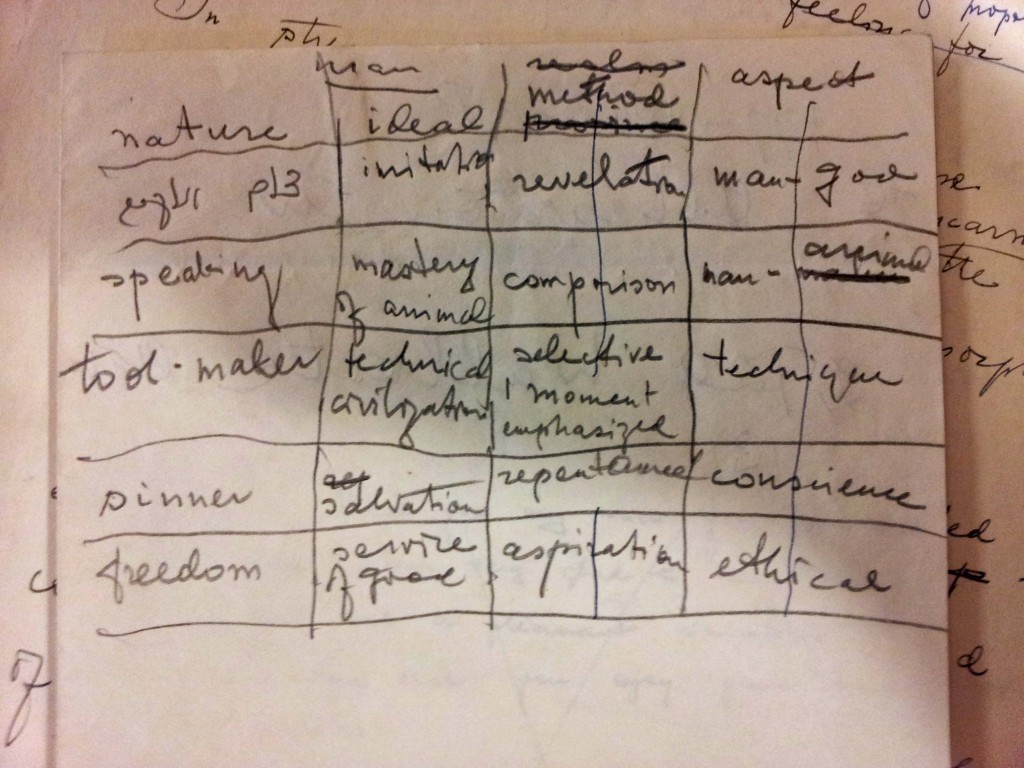Heschel Highlights, Part 2

Processing the materials in the Abraham Joshua Heschel papers over the past three months has presented interesting challenges, including deciphering a wide assortment of languages represented in the collection (we’re up to nine languages thus far) and determining date ranges for the materials. As a result, we’ve come up with some creative, yet practical solutions to address these challenges and are hopeful they will positively affect how researchers interact with and interpret the materials in the collection.
Language materials
Materials in English make up about 57% of the collection; materials in Hebrew and Yiddish about 38%; materials in German 4%; and materials in Italian, Spanish, French, Latin, and Polish about 1%. There are varying degrees of the amount of language materials in each folder and oftentimes multiple languages are represented in a single folder (sometimes in a single document!). Hebrew is particularly challenging as Heschel not only wrote in Hebrew but also frequently wrote folder titles in Hebrew.
To assist researchers understand the language(s) represented in the collection and its extent, each folder description will include a note identifying the language(s) and its extent in the folder. As an example, if all the materials are in German, the note will read “All materials in German,” or if there is a mix of language materials, the note may read “Most materials in German and Yiddish.” To assist researchers with the folder titles in Hebrew, we will be providing the original folder title in Hebrew, the transliteration of the title, and a translation of the title.
Look on both sides!
Heschel tended not to date the materials he authored, nor did he date the folders. However, he does appear to have been a master at recycling paper for his handwritten notes. So far, we’ve discovered he reused coupons, correspondence, receipts, other handwritten notes, memoranda, and (my personal favorite) his student’s blue exam books. In many cases, turning these scraps of paper or documents over has provided essential clues to the date(s) of the materials in the folder.
Looking on the other side of the materials has also had some unexpected benefits by providing additional clues to Heschel that may not have been discovered. As an example, we came across a handwritten table which provides descriptions related to the topic of “Man.”
 On the reverse side is a draft letter Heschel wrote in 1941, about a year after he arrived in the United States. He asks the recipient of the letter about the availability of a room and if she knows of a place where he could “take one meal every day.” Heschel crossed the letter off and then reused it for other purposes.
On the reverse side is a draft letter Heschel wrote in 1941, about a year after he arrived in the United States. He asks the recipient of the letter about the availability of a room and if she knows of a place where he could “take one meal every day.” Heschel crossed the letter off and then reused it for other purposes.
 Stayed tuned for more Heschel Highlights in the near future!
Stayed tuned for more Heschel Highlights in the near future!
Post contributed by Mary Samouelian, Heschel Processing Archivist in Rubenstein Technical Services

